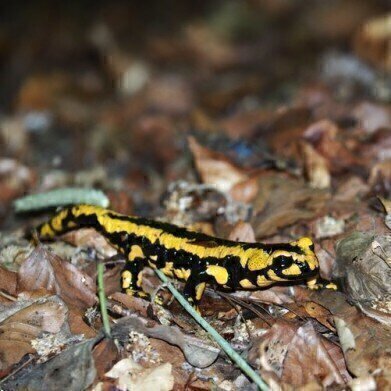GC-MS
Are Toxic Fire Salamanders More Yellow? - Chromatography Investigates
May 12 2019
Evolution means animals to adapt to their surroundings. Visual adaptations include stripes to help an animal blend in to grasslands or shrub, or animals taking on the appearance of their surroundings by using camouflage like stick insects or an octopus on the seabed.
But some animals openly display themselves like an advert saying here I am, can you see me? Sometimes these animals are warning predators that they are poisonous or dangerous. This is aposematism - animal coloration that is serving as a warning and comes from the Ancient Greek of apo away and sema sign. A recent paper published in the Journal of Zoology has taken a look at whether brighter colours mean more toxicity.
In plain sight - the animals too toxic to eat
Aposematism is an evolutionary survival strategy of prey species. It combines a signal - that can be visual, chemical or acoustic - with some form of chemical defence. It is hoped that the predator learns to avoid the foul tasting or toxic prey - associating the signals with something to avoid. It is a tactic widely used in the animal kingdom by invertebrates, mammals and amphibians.
But some prey animals send out dishonest signals - they appear bright and garish but they aren’t really toxic or distasteful to predators. And it seems that not all animals that appear aposematic are the real thing - there is a lack of scientific research supporting the theory of aposematism for many species.
Salamander, a lizard like amphibian
One of the most colourful animals to use aposematism are salamanders - especially the black and yellow fire salamanders. All species of salamander are poisonous to some extent. They produce poison in their parotoid or granular glands, and it is thought that salamanders by acquiring strong bacterial species.
Salamanders secrete a toxin over their skin, meaning anything that eats them can get poisoned. But different salamander species produce different toxins. Not all salamanders are equally toxic. In fact, in some species it is thought that the juveniles are more toxic than the adults. The toxin that salamanders produce is only likely to cause discomfort to humans if we handle them and rub our eyes or nose. They are shy animals and are more likely to hide from us when we approach.
Fire Salamanders - more colour, more toxic?
Researchers from Germany have been investigating whether there is any relationship between colour brightness and toxicity in salamanders. They analysed secretions from the animals parotoid glands using gas chromatography. Using GC is discussed in the article, Detection of molecular markers in aquatic sediments by ion profiles obtained by GC/MS system.
The analysis that the team carried suggests: ‘no correlation between yellow ratio and toxicity; instead yellow coloration was significantly affected by sex (males displaying more yellow), and location.’ Instead, the team postulate that colouration might be determined more by sexual selection and genetic drift rather than toxicity.
Digital Edition
Chromatography Today - Buyers' Guide 2022
October 2023
In This Edition Modern & Practical Applications - Accelerating ADC Development with Mass Spectrometry - Implementing High-Resolution Ion Mobility into Peptide Mapping Workflows Chromatogr...
View all digital editions
Events
Sep 22 2024 Messina, Italy
Analytica Anacon India & IndiaLabExpo
Sep 26 2024 Hyderabad, India
Sep 29 2024 Singapore
Oct 06 2024 Liverpool, UK
Oct 09 2024 Birmingham, UK









-(300-x-250-mm)_1.jpg)




